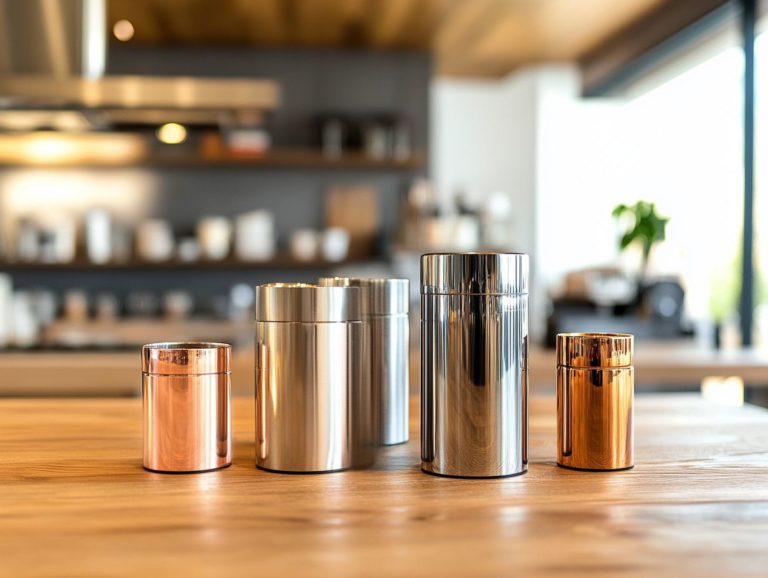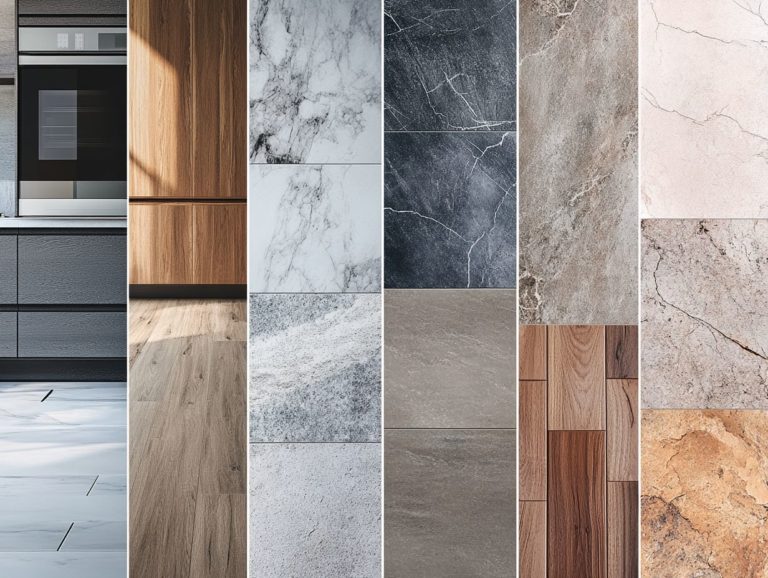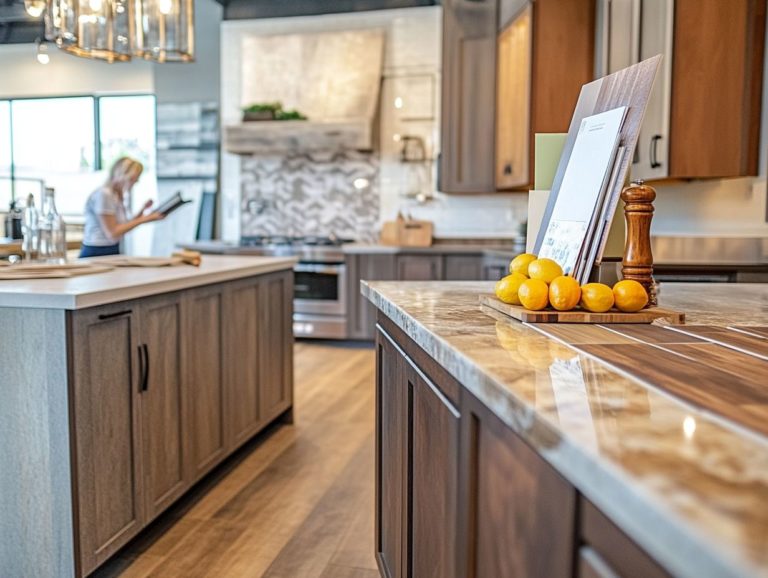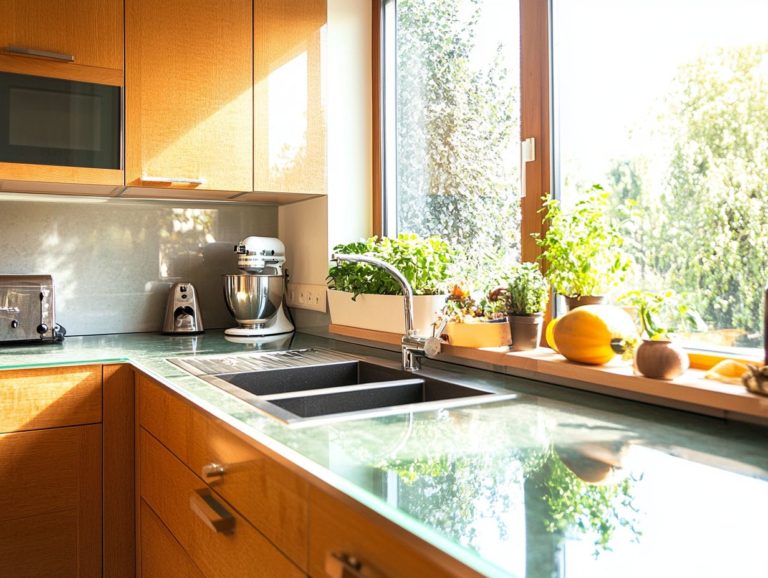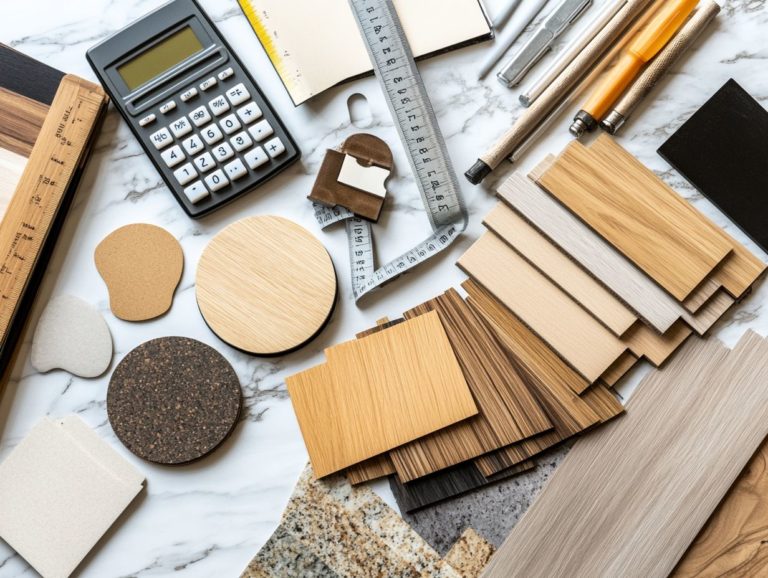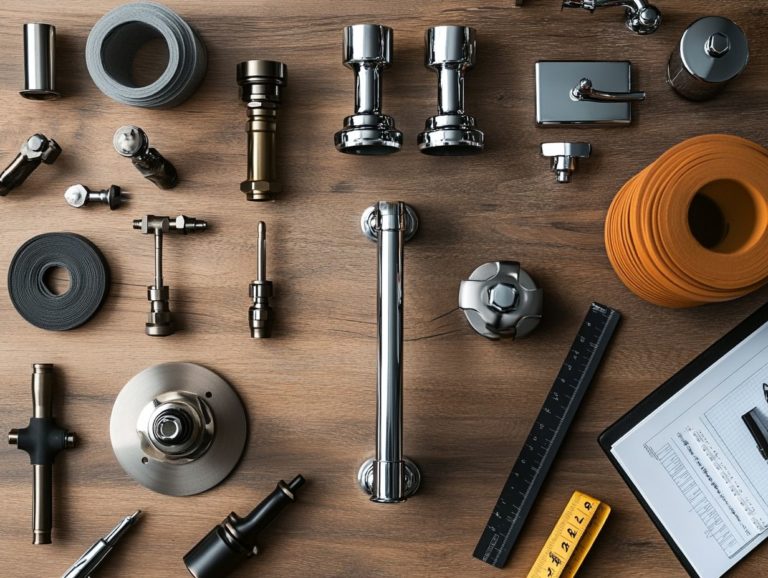5 Classic Materials for Timeless Kitchen Design
When you’re designing your dream kitchen, the choice of materials truly sets the stage. From the beautiful and strong marble to the rustic charm of wood, each option brings its unique character and functionality to the table.
This article delves into five classic materials—marble, wood, stainless steel, ceramic tiles, and quartz—shedding light on their pros and cons, design versatility, durability, maintenance requirements, and eco-friendly choices.
Dive in now to find the perfect material that fits your style and enhances your kitchen!
Contents
Key Takeaways:
Here are the essential insights on each material:
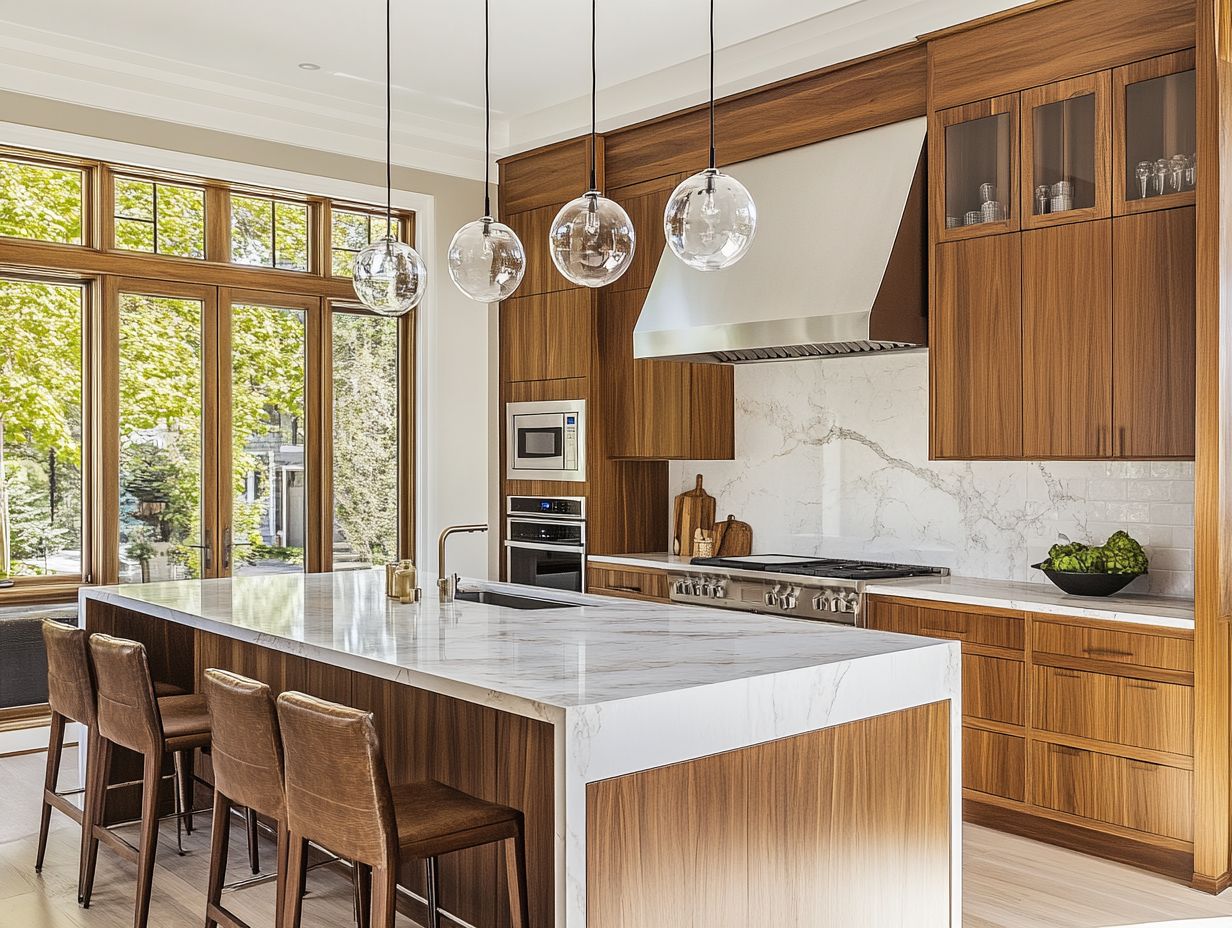
Marble adds elegance and sophistication to any kitchen design, but it requires regular maintenance and can be prone to staining.
Wood is a timeless and versatile material, but it may not be suitable for high-moisture areas and can be susceptible to scratches and wear over time.
Stainless steel is durable and easy to clean, but it may show fingerprints and scratches easily.
1. Marble
Marble is a classic material that has captivated designers for centuries. It offers a beautiful and strong choice for your kitchen remodel or renovation. With its natural beauty and unique veining patterns, each piece becomes a one-of-a-kind statement, adding character and sophistication to your kitchen layout.
The durability of marble isn’t just about aesthetics; it’s practical and can withstand the demands of daily cooking and food preparation. Its smooth surface is easy to clean and maintain, making it appealing for a bustling kitchen environment.
When you incorporate marble countertops, they integrate seamlessly into the kitchen layout, facilitating efficient movement between cooking, cleaning, and storage.
If sustainability is on your radar, responsibly sourced marble can play a role in your eco-friendly design. Designers like Helen Parker and deVOL have embraced this approach, showing how timeless materials can beautifully harmonize with environmental consciousness.
2. Wood
Wood is a timeless material that enhances kitchen design, adding warmth and versatility that can elevate any layout—especially in shaker-style cabinetry and exquisite accessories.
With a multitude of options, including stained and painted finishes, wood adapts to any aesthetic, solidifying its status as a favorite choice in kitchen remodels.
Types of wood, like oak, maple, and cherry, each offer distinctive grain patterns and hues, contributing to visual appeal and the durability of your kitchen cabinetry and flooring.
For example, oak is celebrated for its robust nature and resistance to wear, making it an excellent choice for high-traffic areas.
Current design trends highlight wood’s remarkable compatibility with other materials. By incorporating elements such as metal and marble, you can create striking contrasts that enhance both rustic and contemporary styles.
Mixed-material designs are particularly in vogue, allowing you to curate a personalized space that reflects your unique taste while ensuring functionality remains at the forefront.
Choosing the right material can transform your kitchen. Start your journey today!
3. Stainless Steel
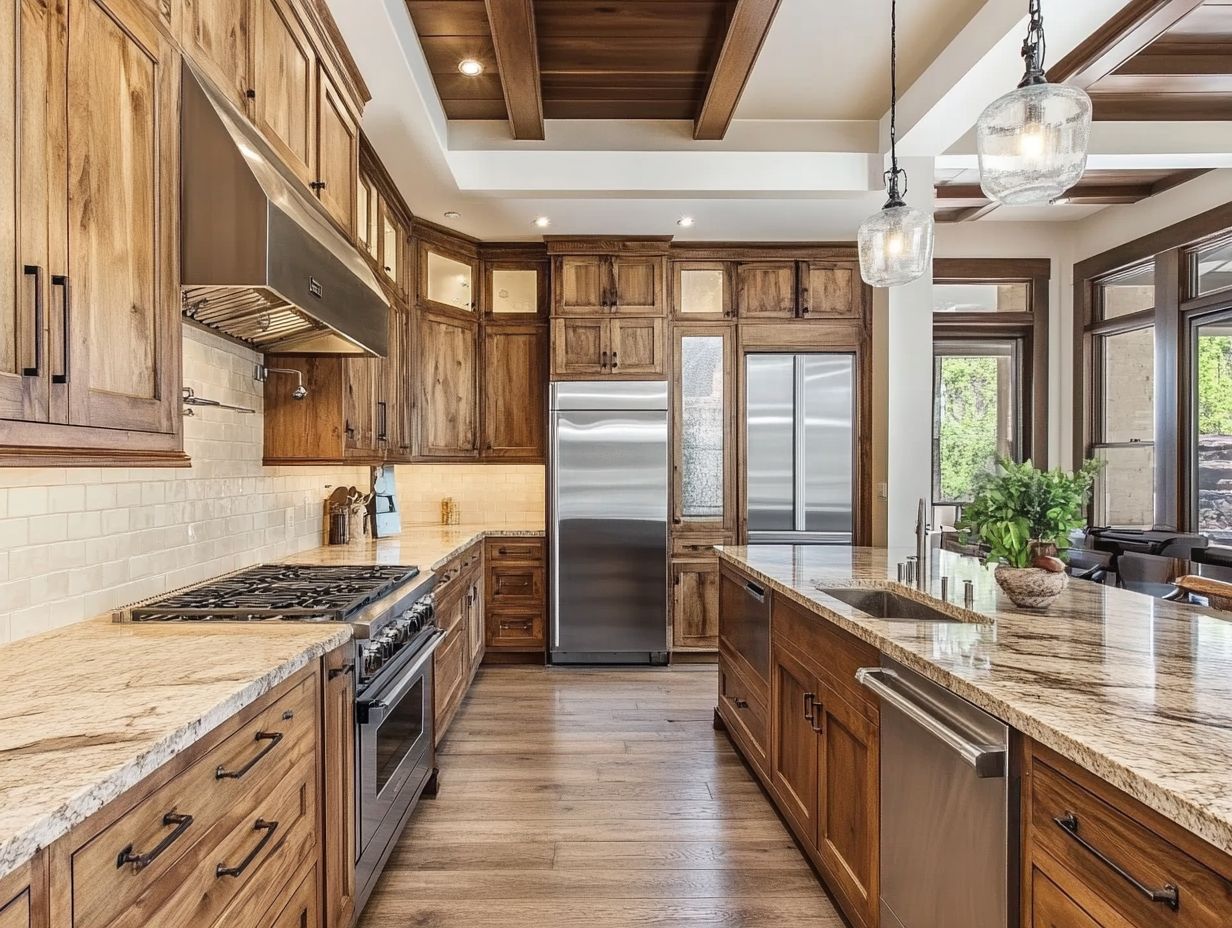
Looking to upgrade your kitchen? Stainless steel is a fantastic choice! It’s a symbol of timeless kitchen design, celebrated for its sleek looks and strength.
It doesn’t rust easily and is easy to maintain. This means it looks good for years!
This versatile material fits well with wood and marble surfaces, creating a warm and elegant atmosphere.
Stainless steel countertops offer an attractive work surface. They are hygienic and easy to clean.
Stainless steel is also eco-friendly! It can be recycled and is sourced sustainably.
Homeowners love its low maintenance. Just polish it occasionally to keep that stunning shine!
4. Ceramic Tiles
Ceramic tiles are a classic choice for kitchen floors and backsplashes. They blend beauty with durability.
With a wide range of colors and patterns, they fit any kitchen design. Plus, they’re easy to maintain.
Their versatility is impressive! You can choose classic or modern styles.
Installing ceramic tiles is simple. Just ensure a clean surface and use adhesive.
Keeping ceramic tiles clean is easy—just sweep and mop regularly. They resist stains and moisture well!
5. Quartz
Quartz is a top choice for kitchen countertops. It offers stunning colors and patterns that look like natural stone.
It’s incredibly durable and low maintenance. Perfect for busy kitchens!
Its surface resists stains and scratches, making it a hygienic option for food prep.
Unlike marble and granite, quartz needs less upkeep and isn’t prone to chipping. Ideal for families!
Sustainability is a plus—quartz can be made from recycled materials to lessen environmental impact.
In any kitchen design, quartz is a standout feature. It fits seamlessly into any style!
How to Choose the Right Material for Your Kitchen?
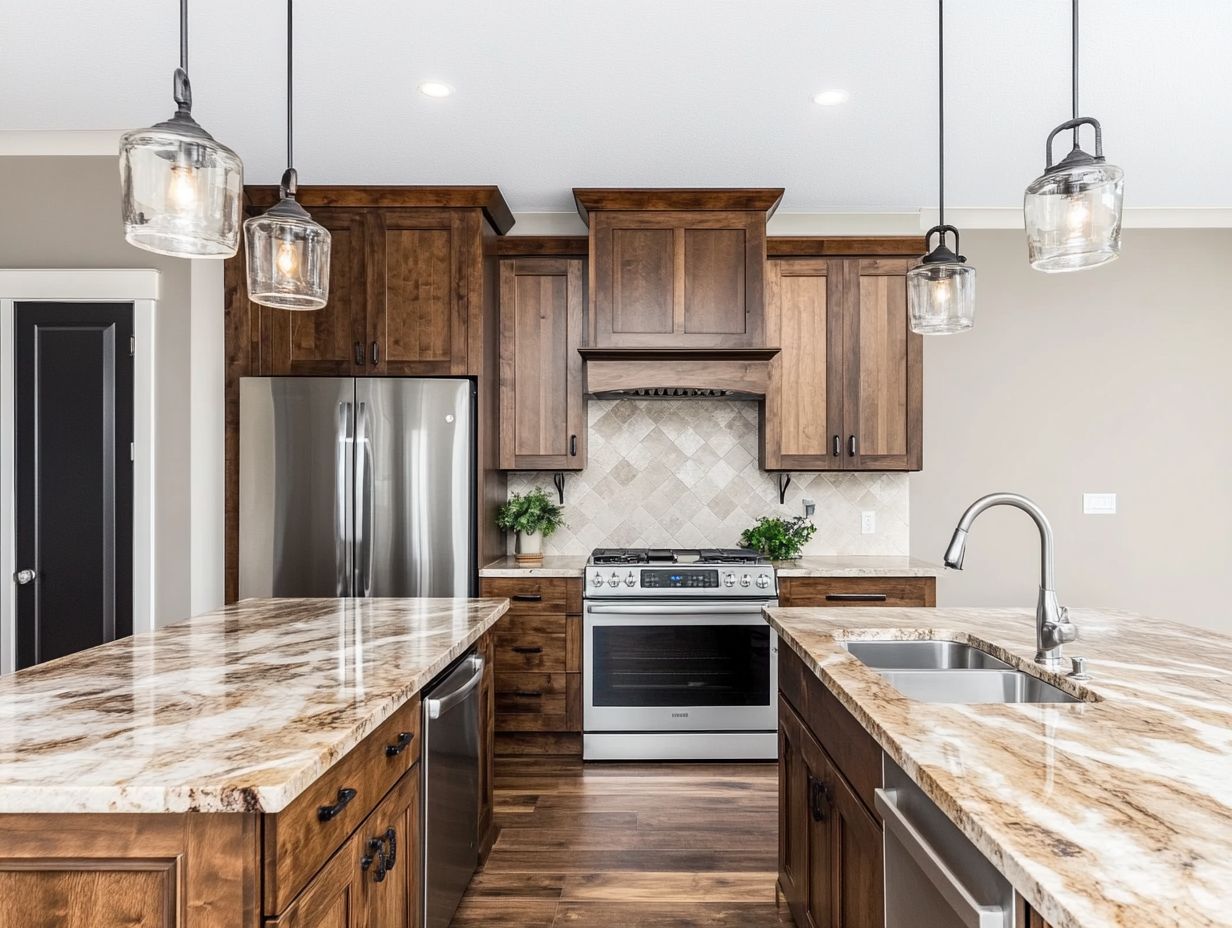
Choosing the right materials for your kitchen is crucial for crafting a timeless design that improves both the look and function of your space. You’ll want to consider factors like durability, maintenance, and sustainability when selecting materials such as cabinetry, countertops, flooring, and fixtures that resonate with your personal style and cater to your lifestyle needs.
As you explore various options, finding that perfect balance between beauty and practicality is essential. For cabinetry, wood finishes can bring warmth, while composites—materials made from a mix of substances—offer a sleek, modern touch. In terms of countertops, you might lean towards classic granite or embrace innovative quartz that beautifully mimics natural stone, ensuring both elegance and resilience.
Consider flooring options like tile, hardwood, or sustainable bamboo. These choices will influence the overall look of your kitchen and its longevity. Keep an eye on trends like eco-friendly materials and multifunctional designs, as they guide you toward choices that align with your personal values while ensuring your kitchen remains stylish and functional for years to come.
What Are the Pros and Cons of Each Material?
Examining the pros and cons of various kitchen materials allows you to make informed choices that resonate with your design preferences and functional needs. Here’s a quick look at what each material offers:
-
Take marble, for example. It radiates stunning elegance with its intricate veining, but it can be prone to scratching and staining, making it less ideal for high-traffic areas.
-
On the flip side, quartz stands out for its incredible durability and low maintenance, perfect for bustling kitchens, although it might not possess the same natural allure as marble.
-
Wood countertops bring warmth and charm to your space, yet they require regular sealing to fend off water damage.
-
Meanwhile, stainless steel offers a sleek, easy-to-clean surface that suits modern aesthetics, though it does have a tendency to dent.
-
Ceramic tiles can elevate the look of your kitchen instantly but require some grout maintenance.
When you know what each material does best, you can create a perfect kitchen that beautifully balances style and functionality.
What Are the Different Styles That Can Be Achieved with These Materials?
The choice of materials in your kitchen design plays a pivotal role in shaping the overall style and ambiance. With the right selections, you can effortlessly transition from sleek modern minimalism to the cozy charm of a classic country kitchen adorned with shaker-style cabinetry and exquisite accessories.
By curating a thoughtful blend of timeless materials, you can craft a harmonious color palette that resonates with your personality while enhancing the functionality of your kitchen layout.
For instance, consider the striking juxtaposition of sleek quartz countertops paired with rustic wooden cabinets, creating a delightful balance between contemporary flair and traditional warmth. Alternatively, integrating stainless steel appliances with matte black cabinetry is an increasingly popular choice, making a bold statement in any culinary setting.
On the flip side, opting for lighter shades of wood combined with textured stone can evoke a warm, inviting atmosphere, perfect for family gatherings and cherished moments.
As you explore these combinations, it’s clear how versatile kitchen designs can be, stemming from deliberate material choices that not only serve aesthetic purposes but also enrich your daily cooking experiences.
Ready to transform your kitchen into a space you love? Start your kitchen transformation today with the right materials to match your style!
How Do These Materials Hold Up Over Time?
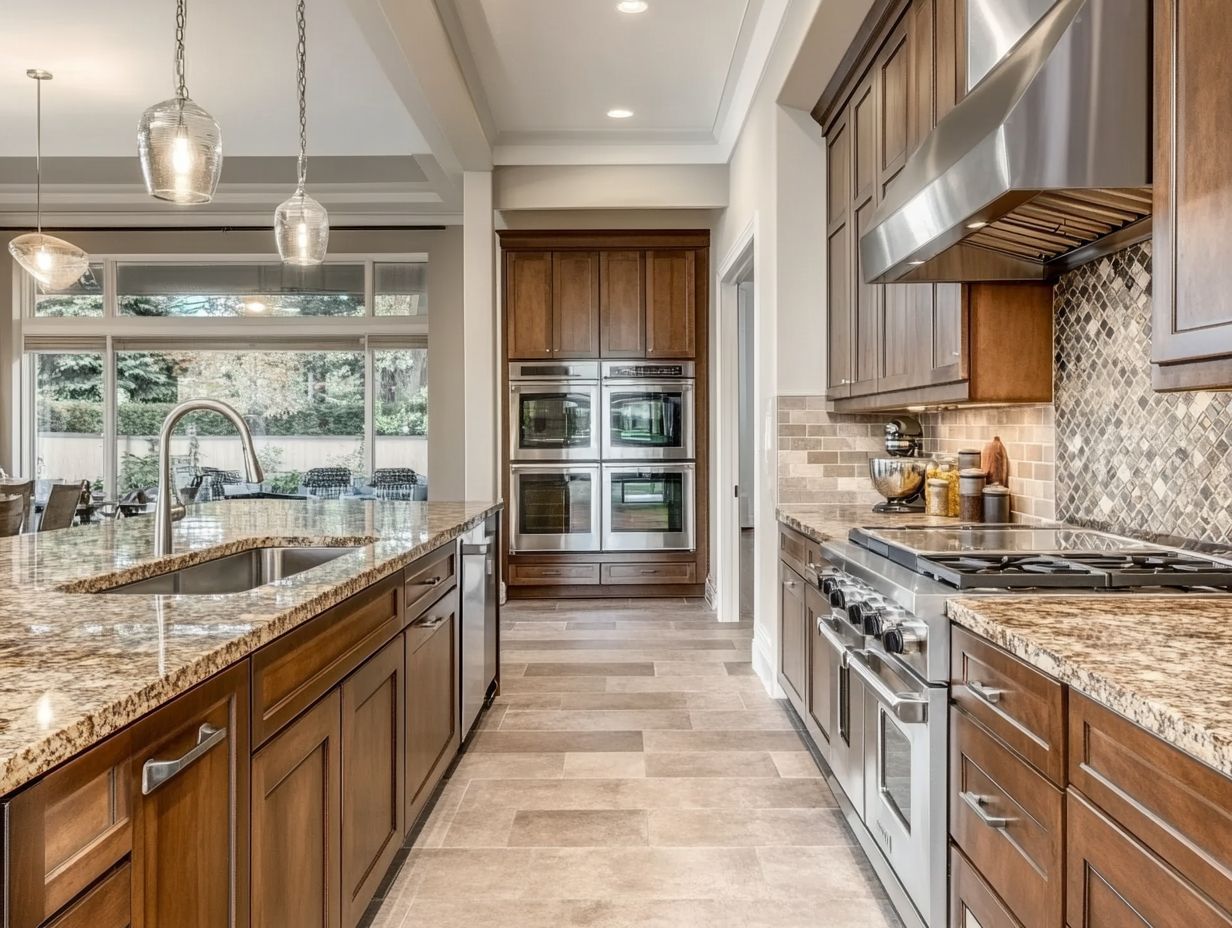
Understanding how various kitchen materials withstand the test of time is essential for homeowners seeking to invest in a kitchen that remains both beautiful and functional for years to come.
Evaluating the durability and maintenance needs of materials like marble, quartz, wood, stainless steel, and ceramic tiles can help guide your choices. This way, you can find the options that align perfectly with your lifestyle and kitchen usage.
Each material has its own strengths and challenges, especially when faced with the daily rigors of cooking and cleaning. For example, while quartz is celebrated for its low maintenance and stain resistance, marble requires a bit more love and care due to its vulnerability to etching, which means leaving marks from acidic substances like lemon juice.
Seal wood surfaces regularly to protect them from scratches and water damage. Stainless steel, a popular choice for its durability, shines brightest when treated with gentle cleansers to avoid scratches and maintain its gleam.
Many manufacturers offer warranties, which provide peace of mind as you navigate the best materials for your kitchen setup.
What Are the Maintenance Requirements for Each Material?
Wondering how to care for each material? Let’s break it down! Maintenance requirements for kitchen materials vary significantly, impacting their longevity and appearance.
Take marble as an example; it requires gentle cleaning solutions free from harsh acids that could dull its finish. On the other hand, quartz is less porous and can typically be cleaned with a mild detergent.
For wood surfaces, treating them with mineral oil or beeswax will help maintain their luster. Stainless steel benefits from specialized cleaners designed to avoid streaks and fingerprints.
As for ceramic tiles, they can be easily maintained with pH-balanced detergents to protect their glaze. Don’t neglect maintenance, or you risk permanent stains! Regular upkeep—like sealing surfaces and promptly addressing spills—can make a substantial difference in your kitchen’s overall appearance and durability.
Are There Any Earth-Friendly Options for Kitchen Materials?
Get ready to explore exciting earth-friendly kitchen materials that not only elevate your design but also align with your sustainability goals.
From responsibly sourced wood to recycled quartz surfaces, there’s a wealth of options that beautifully marry aesthetics and environmental responsibility. When you choose these materials thoughtfully, you can significantly reduce your kitchen’s environmental footprint.
Take bamboo, for instance; it’s not just durable. It grows rapidly, making it a renewable resource that helps alleviate deforestation concerns.
Countertops crafted from recycled glass or porcelain also provide unique visual appeal while keeping waste out of landfills.
Look for certifications like FSC (Forest Stewardship Council), which ensures sustainable wood sourcing, and Cradle to Cradle, indicating materials are safe for humans and the environment. These labels indicate adherence to rigorous earth-friendly practices, ensuring that each piece contributes to a healthier planet.
By integrating these sustainable choices with timeless design elements, you can create a kitchen that exudes sophistication while demonstrating a commitment to responsibility. Start your kitchen transformation today with eco-friendly materials!
Frequently Asked Questions
Q: What are the top 5 classic materials for a timeless kitchen design?
A: The top 5 classic materials for a timeless kitchen design are marble, wood, stainless steel, ceramic tiles, and granite.
Q: How can I incorporate marble into my kitchen design?
A: Marble can be integrated in many ways, such as using it for countertops, backsplashes, or flooring. It adds a touch of elegance and sophistication to any kitchen.
Q: Is wood a durable material for kitchen design?
A: Yes, wood is durable. It can withstand daily wear and tear while being treated to resist water and heat damage.
Q: Can stainless steel be used for more than just appliances in a kitchen design?
A: Yes, stainless steel can also be used for countertops, backsplashes, and sinks to create a sleek, modern look.
Q: Are ceramic tiles a good choice for a classic kitchen design?
A: Yes, ceramic tiles are versatile, durable, and available in a variety of colors and patterns to fit any style.
Q: How can I use granite in my kitchen design without breaking the bank?
A: You can opt for granite tiles instead of a slab, use it for a small countertop or accent area, or choose a less expensive type of granite with similar colors and patterns.
